Spark plugs may be small, but they play a crucial role in your engine’s performance, efficiency, and reliability. They ignite the air-fuel mixture inside the combustion chamber, powering your vehicle every time you start the engine. But not all spark plugs are created equal — and choosing the right one can make a noticeable difference in fuel economy, acceleration, and engine longevity. There are several types of spark plugs available today, each with unique materials, designs, and use cases. In this guide, we’ll break down the 10 main types of spark plugs, explain how they differ, and help you understand which one is the best match for your vehicle. Whether you’re a casual driver or a performance enthusiast, this comprehensive guide will give you the knowledge to make an informed choice.
1. Copper / Nickel Spark Plugs
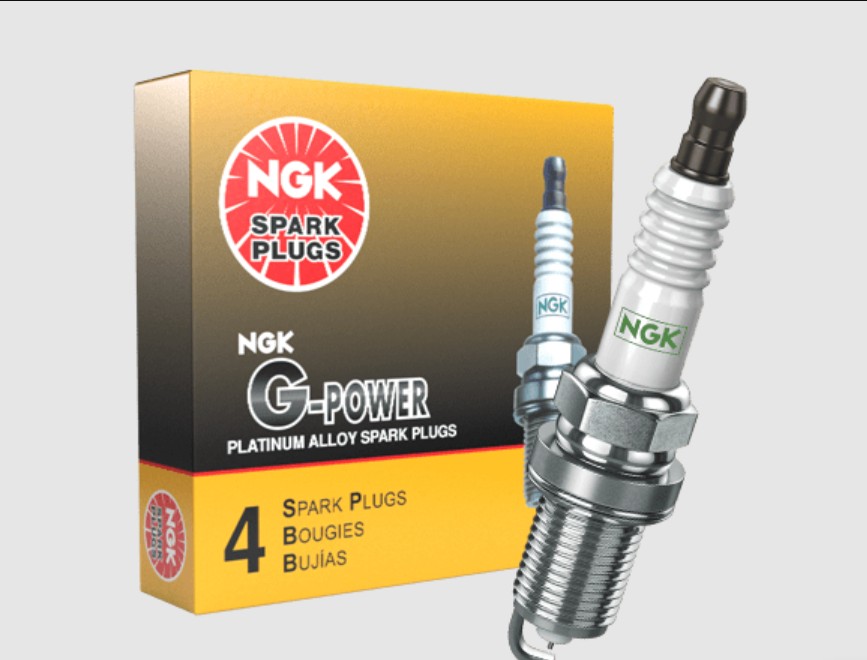
Overview and Construction
Copper spark plugs — sometimes called standard or traditional plugs — are the most basic type available and the oldest spark plug design still in use today. Despite the name, the electrode is not entirely made of copper; instead, the core is copper, while the outer electrodes are typically made from a nickel alloy. This combination allows the spark plug to conduct electricity efficiently while maintaining durability under normal driving conditions.
These plugs have a larger center electrode compared to modern alternatives, which means they require more voltage to generate a spark. However, the copper core helps dissipate heat quickly, making them an excellent choice for engines that run at lower temperatures or older vehicles with less advanced ignition systems.
How They Work
Copper spark plugs operate on the same fundamental principle as all spark plugs: they deliver a high-voltage spark across a small gap, igniting the air-fuel mixture inside the cylinder. Due to the larger electrode size, they need a stronger spark to jump the gap — something older ignition systems were designed to handle. Modern coil-on-plug systems, however, may struggle to deliver the necessary voltage, which is why copper plugs are less common in new vehicles.
Pros
-
Affordable: Copper plugs are significantly cheaper than platinum or iridium alternatives, making them ideal for budget-conscious drivers.
-
Excellent conductivity: The copper core ensures efficient spark delivery, contributing to smooth combustion.
-
Great for older engines: Classic cars, motorcycles, and older vehicles with conventional ignition systems often perform best with copper plugs.
-
Good heat dissipation: The copper material helps prevent overheating, which reduces the risk of pre-ignition.
Cons
-
Shorter lifespan: Typically lasting 20,000–30,000 miles, they wear out much faster than platinum or iridium plugs.
-
Higher voltage requirement: They require more energy to create a spark, which can be demanding for modern ignition systems.
-
Less efficient: The larger electrode size can lead to weaker combustion in advanced engines, affecting performance and fuel economy.
Best Use Cases
Copper spark plugs are best suited for older cars, classic models, and some high-performance or racing engines that prefer a colder plug with excellent conductivity. They’re also a good option for those who perform regular maintenance and don’t mind replacing spark plugs more frequently.
Expert Tip
If you’re driving a vehicle from the 1980s or 1990s, copper plugs might be the best match. However, for modern vehicles with coil-on-plug systems, consider upgrading to platinum or iridium types for better efficiency and longer service intervals.
2. Single Platinum Spark Plugs
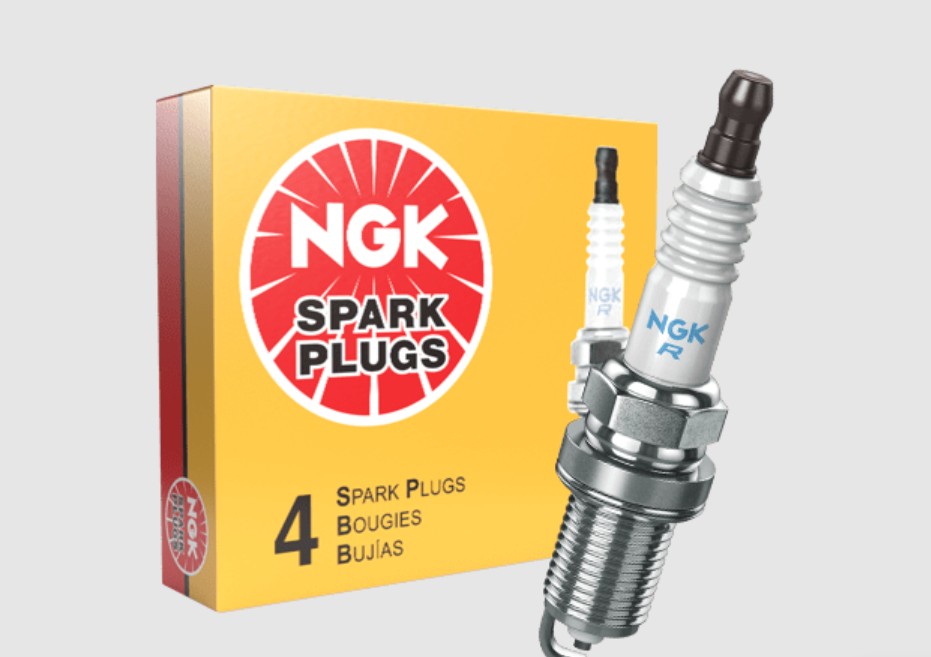
Overview and Construction
Single platinum spark plugs represent the next step in spark plug technology. Instead of using a nickel-alloy electrode, these plugs feature a small platinum disc welded to the tip of the center electrode. Platinum is harder and more durable than nickel, allowing these plugs to resist wear and erosion for much longer.
The electrode is also thinner than that of a copper plug, which means less voltage is required to generate a spark. This design makes single platinum spark plugs more compatible with modern ignition systems, offering improved efficiency and reliability.
How They Work
Single platinum plugs function similarly to copper plugs but offer a more stable and consistent spark due to the platinum tip. Because platinum has a higher melting point and better resistance to erosion, the spark gap remains consistent over time, ensuring reliable combustion and better engine performance throughout the plug’s lifespan.
Pros
-
Longer lifespan: Typically lasts up to 60,000 miles, significantly longer than copper plugs.
-
Better efficiency: Thinner electrodes reduce voltage requirements, improving ignition reliability.
-
Improved fuel economy: Consistent combustion can enhance engine efficiency and fuel consumption.
-
Lower maintenance: Less frequent replacement means reduced maintenance costs over time.
Cons
-
Higher cost: Platinum plugs are more expensive upfront compared to copper alternatives.
-
Not ideal for older vehicles: Older ignition systems designed for high-voltage spark may not fully benefit from platinum plugs.
-
Less performance in extreme conditions: For high-performance or racing applications, platinum may not offer the same spark intensity as iridium.
Best Use Cases
Single platinum spark plugs are an excellent choice for modern sedans, SUVs, and daily drivers. They strike a balance between cost and performance, offering reliable ignition, good fuel economy, and long-lasting durability for most standard engines.
Expert Tip
If you’re upgrading from copper plugs and want a “set-it-and-forget-it” solution, single platinum spark plugs are a great starting point. They’re ideal for typical driving conditions and deliver a noticeable improvement in performance without the premium price tag of iridium.
3. Double Platinum Spark Plugs
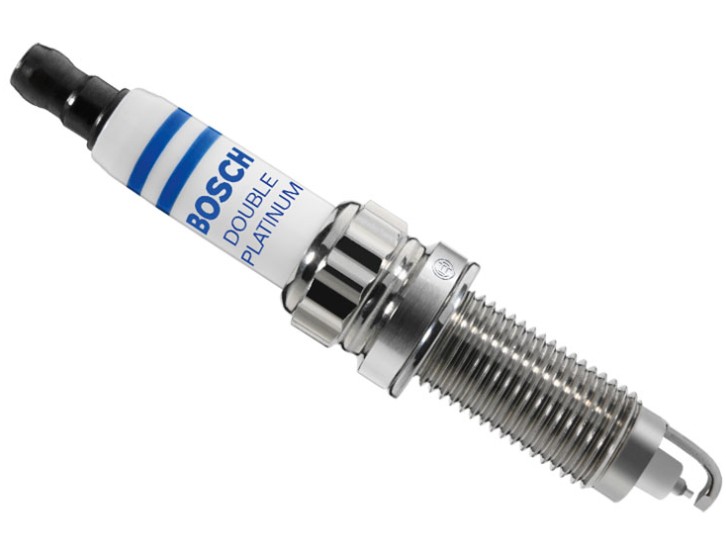
Overview and Construction
Double platinum spark plugs build upon the single platinum design by incorporating platinum on both the center and ground electrodes. This dual-platinum configuration provides even greater durability, especially in ignition systems that rely on a “wasted spark” design — where the plug fires twice for every combustion cycle, once during compression and once during the exhaust stroke.
The double-platinum setup ensures that both electrodes resist erosion and maintain a consistent spark gap over time. This results in reliable performance, better ignition efficiency, and extended service life.
How They Work
In wasted-spark ignition systems, the spark plug fires in both directions. With single platinum plugs, only the center electrode is protected, and the ground electrode wears faster. Double platinum plugs solve this issue by reinforcing both electrodes, preventing uneven wear and maintaining spark strength even after tens of thousands of miles.
Pros
-
Exceptional durability: Double platinum plugs can last up to 100,000 miles, significantly reducing maintenance intervals.
-
Consistent spark: The dual-platinum design ensures stable combustion and efficient fuel burn.
-
Ideal for wasted-spark systems: They’re specifically engineered to handle the demands of dual-direction firing.
-
Improved fuel economy and emissions: Efficient combustion reduces fuel consumption and tailpipe emissions.
Cons
-
Higher cost: More expensive than single platinum plugs due to the additional platinum material.
-
Overkill for some engines: In vehicles without a wasted-spark system, the benefits may be less noticeable.
-
Slightly less performance-focused: For racing or extreme performance, iridium options may still be superior.
Best Use Cases
Double platinum spark plugs are perfect for vehicles equipped with wasted-spark ignition systems, such as many older Ford, Chrysler, and Mazda models. They’re also a great option for drivers who prioritize longevity and low maintenance.
Expert Tip
If you’re unsure whether your vehicle uses a wasted-spark system, check your owner’s manual or consult a mechanic. If it does, investing in double platinum plugs can significantly extend the time between replacements.
4. Iridium Spark Plugs
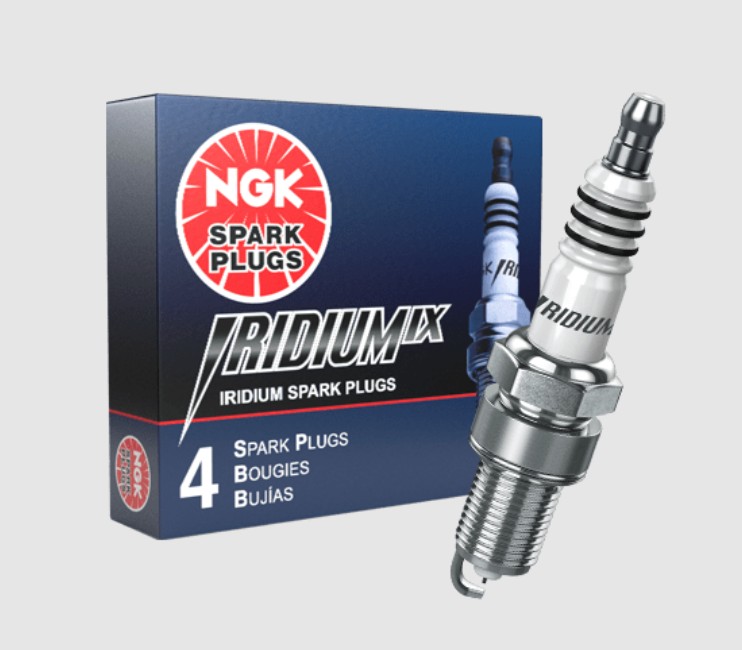
Overview and Construction
Iridium spark plugs represent a significant leap in spark plug technology. Iridium is a precious metal that’s even harder, stronger, and more heat-resistant than platinum. Its superior properties allow manufacturers to produce an ultra-fine electrode tip — sometimes as thin as 0.4 mm — which requires much less voltage to generate a spark and provides exceptional ignition efficiency.
This fine-wire design not only enhances performance but also improves cold starting, throttle response, and fuel efficiency. Because iridium is highly resistant to wear and erosion, these plugs often last much longer than copper or platinum alternatives.
How They Work
Iridium plugs generate a highly concentrated spark due to the fine electrode tip. This intense spark ensures more complete combustion, which leads to better fuel economy, smoother acceleration, and reduced emissions. The small electrode size also minimizes quenching (loss of heat from the spark), allowing the flame kernel to grow quickly and efficiently.
Pros
-
Outstanding longevity: Many iridium plugs last over 100,000 miles, making them one of the most durable options available.
-
Superior performance: Faster, more reliable ignition improves throttle response and overall engine performance.
-
Enhanced fuel economy: More efficient combustion reduces fuel consumption and emissions.
-
Excellent cold-start reliability: Iridium plugs excel in cold weather, where reliable ignition is crucial.
-
Low maintenance: With such a long lifespan, replacements are infrequent.
Cons
-
High cost: Iridium spark plugs are among the most expensive types available.
-
Difficult to gap: Due to the fine electrode, adjusting the gap can risk damaging the plug.
-
Overkill for basic engines: In low-performance or older engines, the benefits may not justify the cost.
Best Use Cases
Iridium spark plugs are ideal for modern, high-performance engines, especially those with direct injection, turbocharging, or high compression. They’re also a great choice for drivers who prioritize fuel economy, reliability, and reduced maintenance.
Expert Tip
If you plan to keep your vehicle long-term or want to maximize performance and efficiency, iridium spark plugs are worth the investment. Always check your owner’s manual, as many newer vehicles come with iridium plugs from the factory.
5. Double Iridium Spark Plugs
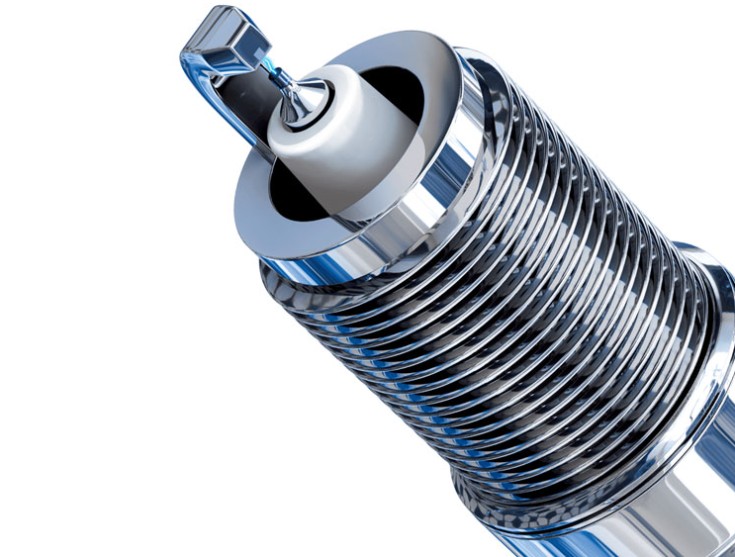
Overview and Construction
Double iridium spark plugs take the performance and durability of standard iridium plugs even further. In this design, iridium is used on both the center and ground electrodes, providing exceptional resistance to wear and maintaining optimal spark performance over an extended period.
This dual-iridium construction is particularly beneficial for engines that operate under extreme conditions — such as turbocharged or supercharged engines — where high combustion pressures and temperatures can quickly wear down standard plugs.
How They Work
With iridium on both electrodes, double iridium plugs deliver a consistently strong spark throughout their lifespan. They’re designed to handle intense combustion environments and maintain precise ignition timing, which is critical for high-performance applications. This consistency translates to better fuel efficiency, smoother power delivery, and reliable ignition even under heavy loads.
Pros
-
Maximum durability: Double iridium plugs can exceed 120,000 miles in many applications.
-
Peak performance: Superior spark consistency improves power output and combustion efficiency.
-
Excellent for high-stress engines: Ideal for turbocharged, supercharged, or performance-oriented engines.
-
Low maintenance: Extremely long replacement intervals save time and cost over the vehicle’s life.
Cons
-
Premium price: The most expensive option on the market.
-
May be unnecessary: For standard vehicles, the added cost may not yield noticeable benefits.
-
Limited availability: Not all manufacturers offer double iridium versions for every engine type.
Best Use Cases
Double iridium spark plugs are best suited for high-performance and forced-induction engines, where extreme heat, pressure, and demand require maximum durability and efficiency. They’re also a smart choice for drivers who want the longest possible service life with minimal maintenance.
Expert Tip
If you drive a performance vehicle or frequently push your engine to its limits, double iridium plugs can deliver the reliability and consistency you need. They’re also an excellent “install-and-forget” solution for drivers who prefer minimal maintenance schedules.
6. Platinum/Iridium Hybrid Spark Plugs
Overview and Construction
Platinum/iridium hybrid spark plugs are a relatively new innovation in ignition technology. As the name suggests, they combine the best properties of both platinum and iridium into one design. Typically, the center electrode is tipped with iridium — known for its exceptional hardness, high melting point, and superior spark efficiency — while the ground electrode is tipped with platinum, which provides excellent durability and erosion resistance.
This dual-metal construction allows hybrid plugs to deliver the high performance and low voltage requirements of iridium spark plugs while maintaining the longevity and stable spark gap associated with platinum. The result is a versatile spark plug that balances performance, lifespan, and cost more effectively than most single-material options.
How They Work
The key to hybrid spark plugs lies in the synergy of materials. The iridium center electrode produces a strong, concentrated spark with minimal voltage demand, while the platinum ground electrode resists wear and ensures the spark gap remains consistent over tens of thousands of miles. This consistency leads to more efficient combustion, better throttle response, and improved fuel economy.
Because of their balanced performance profile, hybrid spark plugs work exceptionally well in a wide range of engines — from standard passenger vehicles to performance-oriented models. They are also ideal for drivers who want long service intervals without sacrificing ignition quality.
Pros
-
Balanced performance and durability: Combines the strengths of iridium and platinum for a well-rounded spark plug.
-
Lower voltage requirement: The fine iridium electrode allows for reliable ignition, even in advanced ignition systems.
-
Extended lifespan: Hybrid plugs can often last between 80,000 and 120,000 miles.
-
Improved fuel efficiency: Consistent, high-quality sparks promote complete combustion.
-
Versatile compatibility: Works well with both standard and performance engines.
Cons
-
Higher cost: More expensive than single-metal spark plugs, though often cheaper than full double-iridium designs.
-
Not always necessary: For basic daily drivers, the added performance may go unnoticed.
-
Limited availability: Not every manufacturer offers hybrid spark plugs for all vehicle models.
Best Use Cases
Platinum/iridium hybrid spark plugs are ideal for modern vehicles that require a balance between longevity, performance, and efficiency. They’re a popular choice for drivers who want a premium spark plug without paying top dollar for double-iridium models. These plugs are especially useful for vehicles that see a mix of city and highway driving or for those who demand both reliability and performance from their ignition system.
Expert Tip
If you’re upgrading from a standard platinum plug and want a noticeable performance boost without significantly increasing maintenance costs, hybrid spark plugs are a smart choice. They offer an excellent balance of durability and ignition efficiency, making them a “best of both worlds” solution.
7. Silver-Tipped Spark Plugs
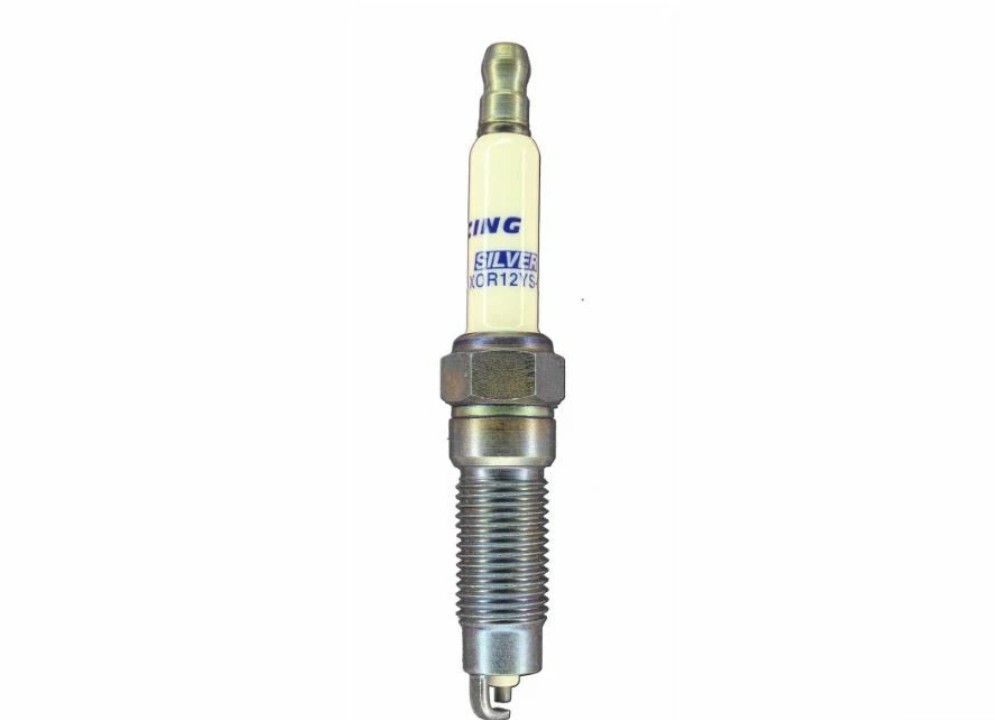
Overview and Construction
Silver-tipped spark plugs are one of the lesser-known types, but they hold a unique place in the world of ignition technology. As the name implies, these plugs use a silver coating on the center electrode, and sometimes on the ground electrode as well. Silver has the highest thermal and electrical conductivity of any metal, which gives these plugs exceptional heat transfer and spark efficiency characteristics.
Historically, silver spark plugs were more common in high-performance and motorsport applications, as well as in older European vehicles. While they’ve been overshadowed by platinum and iridium in modern vehicles, they’re still valued in specific use cases where superior conductivity and rapid heat dissipation are critical.
How They Work
The silver coating enhances conductivity, which allows for a faster and stronger spark. This is especially beneficial in engines that run at higher RPMs or operate under demanding conditions. Silver’s superior heat dissipation properties also help the plug stay within optimal temperature ranges, reducing the risk of pre-ignition and ensuring consistent performance even under heavy load.
However, silver is softer than platinum or iridium, which means these plugs tend to wear out more quickly. As a result, they require more frequent replacement, which can be a trade-off for their performance advantages.
Pros
-
Best conductivity: Silver’s unmatched electrical and thermal conductivity improves spark strength and ignition efficiency.
-
Rapid heat dissipation: Helps prevent overheating and pre-ignition, even under heavy loads.
-
Great for high-performance engines: Ideal for racing, turbocharged, or high-revving applications.
-
Improved throttle response: Quick, strong sparks translate to sharper engine response.
Cons
-
Shorter lifespan: Typically lasts 20,000–30,000 miles, similar to copper spark plugs.
-
Higher cost: Silver is expensive, and its shorter service life makes it less cost-effective for daily drivers.
-
Less widely available: Fewer manufacturers produce silver spark plugs today, and they may not be compatible with all modern vehicles.
Best Use Cases
Silver-tipped spark plugs are best suited for high-performance vehicles, turbocharged engines, motorcycles, and racing applications. They’re also sometimes recommended for older European cars that were originally designed with silver plugs in mind. While they may not be the most practical choice for everyday driving, they excel in specialized scenarios where maximum conductivity and rapid heat dissipation are required.
Expert Tip
If performance is your top priority and you’re comfortable with more frequent maintenance, silver spark plugs can deliver a noticeable improvement in ignition speed and throttle response. However, for daily commuting, consider platinum or iridium options for better longevity.
8. Multi-Electrode Spark Plugs
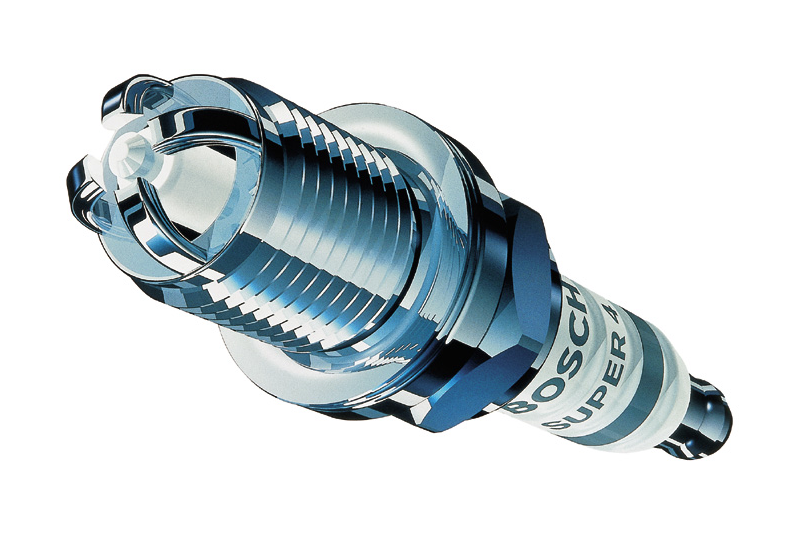
Overview and Construction
Multi-electrode spark plugs are designed with two, three, or even four ground electrodes surrounding a single center electrode. This design aims to extend the lifespan of the spark plug and improve ignition reliability by providing multiple paths for the spark to travel.
While only one spark is produced during each ignition event, the presence of multiple electrodes ensures that the path of least resistance is always available, even as electrodes wear over time. This results in consistent spark quality and reduced misfires throughout the plug’s lifespan.
How They Work
The key principle behind multi-electrode spark plugs is redundancy. As one ground electrode wears down, another takes over, maintaining optimal spark quality without requiring a change in the spark gap. This design also helps distribute electrode wear more evenly, which can extend the plug’s service life.
Some manufacturers claim that multi-electrode plugs improve combustion efficiency and power output. While the performance gains may be modest, the increased reliability and extended service intervals are undeniable benefits.
Pros
-
Extended lifespan: Multiple electrodes reduce wear on each individual electrode, allowing the plug to last longer.
-
Consistent performance: Even as one electrode wears, others ensure a reliable spark.
-
Reduced misfires: Multiple spark paths increase ignition reliability.
-
Minimal maintenance: Less frequent gap adjustments or replacements are required.
Cons
-
Higher cost: More complex construction increases manufacturing costs.
-
Limited performance gains: While reliability improves, the actual performance boost is often modest.
-
Not ideal for all engines: Some high-performance engines prefer single-electrode designs for maximum spark intensity.
Best Use Cases
Multi-electrode spark plugs are an excellent choice for drivers who prioritize reliability and low maintenance. They’re commonly used in fleet vehicles, taxis, and commercial applications where minimizing downtime is crucial. They’re also suitable for daily drivers who prefer extended service intervals without sacrificing ignition quality.
Expert Tip
While multi-electrode spark plugs don’t necessarily boost horsepower, they excel in durability and reliability. If you want a “fit and forget” solution that can handle long service intervals, they’re a great option. Just make sure they’re compatible with your vehicle’s ignition system before installing them.
9. Fine-Wire (Laser Iridium) Spark Plugs
Overview and Construction
Fine-wire spark plugs, often marketed as “laser iridium” plugs, represent the pinnacle of spark plug design for modern vehicles. These plugs feature an ultra-thin iridium center electrode — often less than 0.4 mm in diameter — and a precision-welded platinum pad on the ground electrode. This combination delivers unparalleled ignition efficiency, durability, and performance.
The ultra-fine electrode reduces the voltage required to create a spark and ensures the spark is concentrated and powerful. This leads to more complete combustion, improved fuel economy, and reduced emissions. Laser welding technology ensures perfect alignment and durability of the precious metal tips, further extending the plug’s lifespan.
How They Work
The thin electrode focuses the electrical energy into a concentrated point, producing a hotter and more reliable spark. This improves flame kernel growth and ensures more complete combustion, even in lean fuel-air mixtures. The result is enhanced performance across the board — better acceleration, smoother idling, improved cold starts, and greater fuel efficiency.
Pros
-
Exceptional ignition efficiency: Concentrated sparks ensure complete combustion and maximum power.
-
Ultra-long lifespan: Many fine-wire plugs last over 120,000 miles.
-
Improved fuel economy: Efficient combustion reduces fuel consumption and emissions.
-
Enhanced cold-start performance: Reliable ignition even in cold weather conditions.
-
Ideal for advanced engines: Works perfectly with direct injection, turbocharged, and high-compression systems.
Cons
-
High cost: Among the most expensive spark plugs available.
-
Overkill for basic engines: The performance gains may not justify the price in older or less advanced vehicles.
-
Delicate electrodes: The ultra-fine tip can be easily damaged if mishandled during installation.
Best Use Cases
Fine-wire spark plugs are the top choice for modern high-performance vehicles, turbocharged engines, and advanced ignition systems. They’re also perfect for drivers who want maximum fuel efficiency and minimal maintenance over the life of the vehicle.
Expert Tip
If your vehicle manufacturer recommends laser iridium plugs, stick with them — they’re often tuned for specific combustion characteristics. Always use a torque wrench during installation to avoid damaging the fine electrode.
10. Racing / Performance Spark Plugs
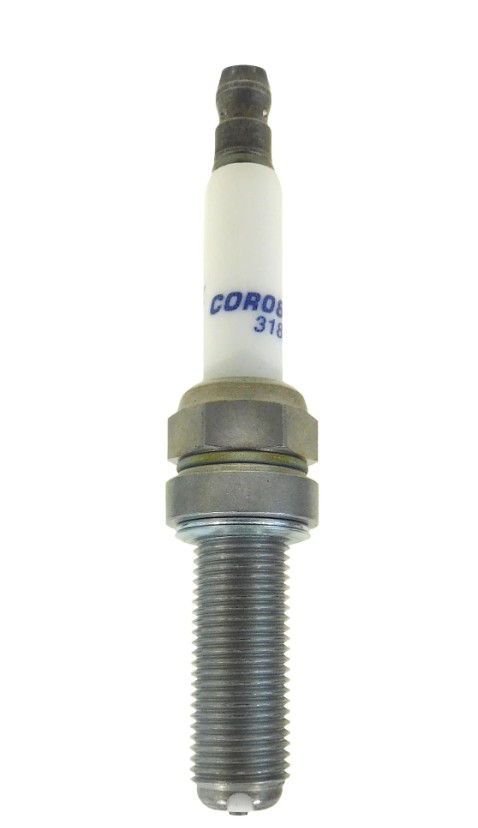
Overview and Construction
Racing or performance spark plugs are engineered for the most demanding environments — from track cars and drag racers to turbocharged street machines. These plugs are designed to withstand extreme heat, pressure, and combustion forces while delivering maximum spark energy and ignition reliability.
Construction varies widely depending on the application, but performance plugs often feature advanced materials (such as iridium or silver), reinforced electrodes, specialized heat ranges, and optimized gap designs. Many are also designed to resist fouling in rich fuel mixtures and high-compression conditions common in racing engines.
How They Work
Performance spark plugs focus on delivering a strong, reliable spark under extreme conditions. They often use colder heat ranges to manage the additional heat generated by modified or forced-induction engines. This prevents pre-ignition and detonation, which can cause severe engine damage. The optimized electrode design ensures that even under high boost, high RPM, and high cylinder pressure, the spark remains consistent and powerful.
Pros
-
Maximum spark strength: Delivers the ignition energy needed for high-performance engines.
-
Enhanced durability: Built to withstand extreme temperatures and pressures.
-
Improved throttle response and power: Better combustion efficiency translates to more horsepower.
-
Customizable options: Available in various heat ranges and designs for specific applications.
Cons
-
High cost: Performance plugs are among the most expensive types.
-
Not suitable for daily drivers: They’re often overkill for standard engines and may wear out faster under normal conditions.
-
Frequent maintenance: Racing applications typically require more frequent plug changes.
Best Use Cases
Racing spark plugs are designed for track cars, high-performance street vehicles, turbocharged or supercharged engines, and heavily modified setups. They’re essential for ensuring reliable ignition under the most extreme conditions and for extracting maximum power from a tuned engine.
Expert Tip
Choose a racing spark plug that matches your engine’s specific needs — including compression ratio, boost level, and fuel type. Always consult with a tuner or performance specialist to select the correct heat range and gap settings for your setup.
FAQ’s
1. What type of spark plug is best?
The best spark plug depends on your car and driving. For most modern cars, iridium plugs are the top choice because they last longest and give consistent ignition. Platinum is a good middle ground, and copper is fine for older or race-tuned engines but wears out faster.
2. What is a better spark plug, iridium or platinum?
Iridium is generally better because it’s harder and lasts longer, keeping a strong spark longer. Platinum is still reliable and cheaper, but it usually has a shorter service life than iridium.
3. Is a 6 or 7 spark plug hotter?
Numbering varies by brand, but with NGK style numbers a lower number is hotter. So a 6 is hotter than a 7. Hotter plugs run hotter to help burn deposits; colder plugs suit high-performance or high-temp engines.
4. How many types of spark are there?
If you mean spark plug materials, there are four common types: copper, platinum, double platinum, and iridium. Each mixes durability and performance differently.
5. Is NGK or Bosch better for spark plugs?
Both are excellent. NGK is often preferred for Asian-made cars and wide OEM coverage; Bosch is popular for European cars and some performance fits. Choose based on your car’s recommendation and fitment.
6. Which is better, iridium or copper spark plugs?
Iridium is better for long life and stable performance. Copper gives a strong spark and is cheaper but needs replacing much sooner. Copper can be preferable for older or modified engines that need a specific heat or electrode style.
7. What is the difference between NGK 6 and 7?
The main difference is heat range: NGK 6 is hotter than NGK 7. Use hotter plugs for normal driving to prevent fouling; use colder plugs in high-compression or high-boost engines to avoid pre-ignition.
8. Which NGK plug is hotter?
In NGK’s system, lower heat numbers are hotter. So an NGK 5 is hotter than a 6, and a 6 is hotter than a 7. Always match the heat range to your engine and driving conditions.
9. How to tell the difference in spark plugs?
Look at the center electrode material (copper, platinum, iridium), the heat range number, thread size, and the part code stamped on the shell. Compare those to your vehicle’s manual or parts guide.
10. What is the disadvantage of iridium spark plugs?
The main downside is cost — iridium plugs are pricier. They also have a very fine center electrode that can be damaged if over-tightened or mishandled during installation.
11. What spark plug gives the most horsepower?
No plug will magically add large horsepower. High-quality iridium or performance plugs can improve combustion consistency, which may yield small power and throttle-response gains, but major power increases come from engine mods, not the plug alone.
12. How often should spark plugs be changed?
Change intervals depend on type: copper about every 20k–30k miles, platinum around 60k miles, and iridium up to 100k miles or more. Always follow your vehicle maker’s schedule for best results.
13. What does NGK stand for in spark plugs?
NGK stands for “Nihon Gaishi Kaisha,” which translates to Japan Insulator Company. It started in Japan and became a major global spark plug maker.
14. What is the highest quality spark plug?
Iridium plugs are widely considered the highest quality for longevity and stable ignition. Top models from NGK, Denso, and Bosch are commonly recommended.
15. What is the rule of thumb for spark plugs?
Use the plug type and heat range recommended by your vehicle maker, check gaps if needed, replace at the suggested interval, and don’t overtighten during installation.
16. What country is NGK from?
NGK is from Japan. The company was founded there and is known worldwide for spark plugs and ignition parts.
17. Can I clean NGK spark plugs?
You can clean lightly fouled plugs with a wire brush or a dedicated spark plug cleaner, but if electrodes are worn or damaged, replace them. Cleaning rarely restores full life on older plugs.
18. What does the R stand for on NGK spark plugs?
The “R” means the plug includes a resistor. Resistor plugs reduce electromagnetic interference that can affect radio, sensors, or engine electronics.
19. What’s better, Bosch or NGK?
Both are top-tier brands. NGK is common OEM for many Asian cars; Bosch is strong for European fits and certain performance parts. Pick the brand that matches your car’s spec and local availability.
20. Is NGK a Japanese brand?
Yes, NGK is a Japanese brand that began in Nagoya and grew into a global supplier of spark plugs and ignition products.
21. Is NGK or Denso better?
Both NGK and Denso are excellent Japanese manufacturers. NGK often has wider model fitment; Denso is known for tight manufacturing tolerances. Either is a great choice when matched to your vehicle.
22. Which country made NGK spark plugs?
NGK was founded in Japan and manufactures many plugs there, though it also produces parts in other countries to serve regional markets.
23. Why are NGK iridium spark plugs so expensive?
Iridium metal is rare and hard to machine, and NGK uses precise construction and testing. Those factors plus long service life and reliable performance raise the price compared to simpler plugs.
24. Do I need to gap NGK V-Power spark plugs?
NGK V-Power plugs typically come pre-gapped, but it’s smart to check the gap before installation. If the gap is off from the vehicle spec, adjust it carefully or replace the plug if it can’t be set correctly.
25. Which spark plug brand is the best?
Top trusted brands are NGK, Denso, Bosch, and Champion. The “best” depends on fitment and your car’s requirements; stick to the manufacturer’s recommendation when possible.
26. Do iridium spark plugs increase HP?
Iridium plugs don’t produce large horsepower gains by themselves. They can improve combustion efficiency slightly, which may yield minor power and throttle-response improvements, but they’re not a power upgrade on their own.
27. Which spark plug burns hotter?
Heat is set by a plug’s heat range: lower-number (hotter) plugs run hotter and help burn deposits; higher-number (colder) plugs run cooler for high-temp engines. Material (copper, platinum, iridium) affects durability but the heat rating controls how hot the plug runs.
Conclusion
Spark plugs may be small components, but their impact on engine performance, fuel efficiency, and reliability is enormous. Understanding the different types of spark plugs — from affordable copper options to advanced iridium and racing-grade designs — is key to selecting the right one for your vehicle.
-
For daily driving, platinum and hybrid plugs offer an excellent balance of cost and longevity.
-
For performance enthusiasts, iridium, fine-wire, and racing plugs deliver the spark intensity and durability needed for extreme conditions.
-
For classic cars or older engines, copper plugs remain a reliable and budget-friendly choice.
By matching the right spark plug to your engine’s design and performance needs, you can maximize efficiency, extend engine life, and enjoy smoother, more responsive driving for years to come.
